Bucket List Destination
“Cuba’s on my bucket list! What’s it like?” People ask this question a lot. It’s a complicated question to answer. Another question typically follows. “Would you go back?” That one’s a bit easier to answer, but first I’ll speak honestly about our experience in Havana.
We’ve had a tumultuous relationship with our island neighbor just 90 miles south of Florida and it shows. I could take the time to list all the controversial events that have transpired since Fidel Castro overthrew the U.S. backed Batista regime in 1959. But, for the purposes of this reflection, it suffices to say our relationship with Cuba is complicated.
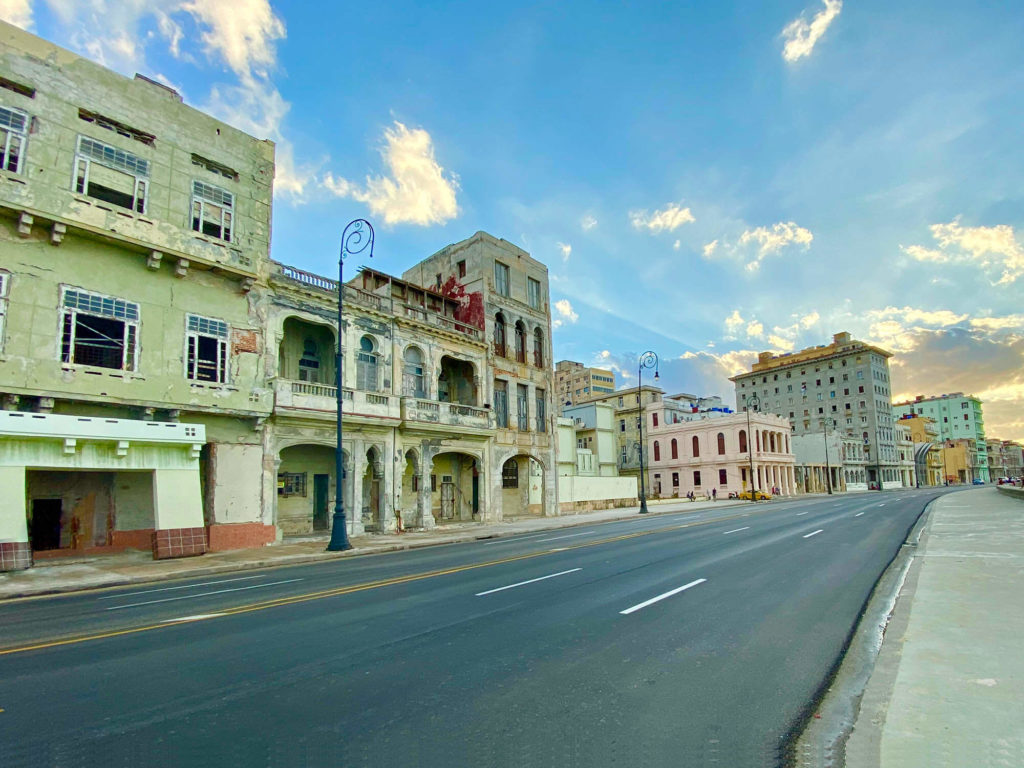
Travel to Cuba has been restricted for decades. Making it an alluring destination for many Americans. Cuba has a mythos of the forbidden. Honestly, it’s one of the reasons we wanted to go. Not many people we know had been there. The unknown is exciting! And as it turned out, there was plenty we didn’t know.
Not for the Faint of Heart
Traveling to Cuba is not for the faint of heart. It’s not your typical Caribbean destination. It requires a bit more planning, and unless you intend to stay in an all-inclusive resort, there are things you should prepare for. That being said, our trip to Cuba was the most educational trip we’ve ever taken. And that’s true for two reasons. First, we took some kind of tour almost everyday we were there. That means we spent a lot of time interacting with educated guides. Which is also the second reason. I don’t just mean educated about the topic of the specific tour. I mean highly educated people. Part of Cuba’s socialist doctrine guarantees free education for everyone. That’s an upside of socialism. A downside of socialism is that a government issued education almost always guarantees a government issued job.
More than 75% of Cubans work for the government. Government jobs only pay about $44 per month. The guides we hired were all educated far beyond the capacity of tour guide. We had a mechanical engineer give us a classic car tour of the city, a professor of economics take us fishing, and a foreign languages specialist give us a bicycle tour. All of them were earning more money through AirBnB tours than their professions.

Cuba Has an Aging Problem
The high percentage of government jobs and limited earning potential in Cuba is creating a big problem. Cuba has an aging problem. Young people are leaving their native country in masses. There aren’t many opportunities for financial success in a socialist system. Socialism doesn’t reward hard work, and government pay and rations aren’t enough. Socialism promised to create equality in Cuba and it delivered. But everyone is not equally rich. They are equally poor.

Young Cubans are in a difficult situation. They don’t benefit from the reallocation of housing and assets like their grandparents did at the start of Castro’s revolution. They face living in those same government-allocated houses three generations deep. Living with their parents and grandparents. There is very rarely an opportunity for private housing. Young newlyweds simply assess which parent has the largest house and move in. Home ownership for most young people can only come through inheritance.
The rise of the internet and access to social media, has awakened Cuba’s youth, and debunked the utopian illusions of socialism. They see it for what it is. Many have had enough. They’re taking their free educations and moving to countries with more opportunities. The United States and Spain top the list.
An Apparition of Prosperity.
Cubans are fully aware of their plight in the world. They’re well-versed in world politics and eager to discuss the topic. We learned a lot about Cuba’s checkered past, its decades of revolutions, and unwavering longing to be independent. Cubans have passionate opinions on American foreign policy, and capitalism. Neither are positive. Both are complicated subjects to discuss there. After talking with locals over the course of the week, I can understand many of their positions. I can’t (fully) agree, but I can understand. Although, it’s hard to discredit the merits of a capitalist system while spending time in Cuba. Capitalism isn’t perfect, but the failures of socialism are written all over the city of Havana.
Cuba is very poor country. You don’t have to stray far outside of the tourist zone of Old Havana before that becomes glaringly apparent. When Castro seized all the assets of private individuals and businesses and nationalized infrastructure, education, and healthcare; two detrimental outcomes resulted. Foreign companies and investors (overwhelmingly American) fled the country, and the quality of the forcibly-acquired public services plummeted.
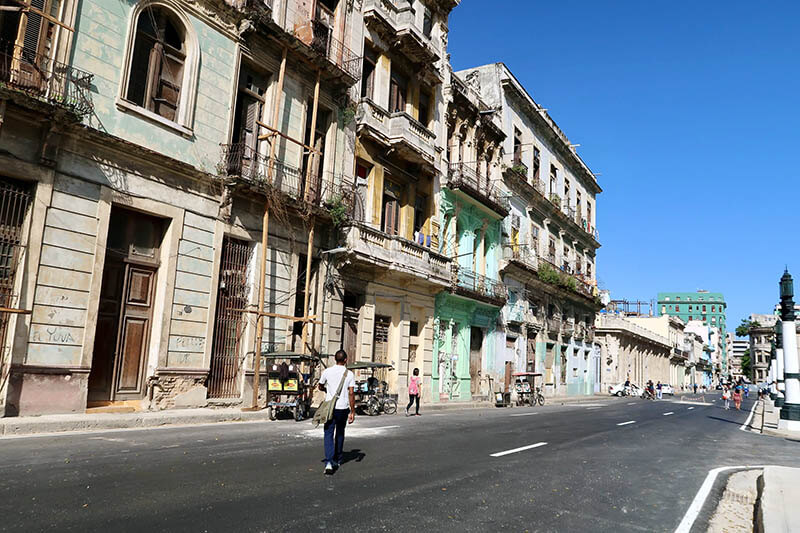
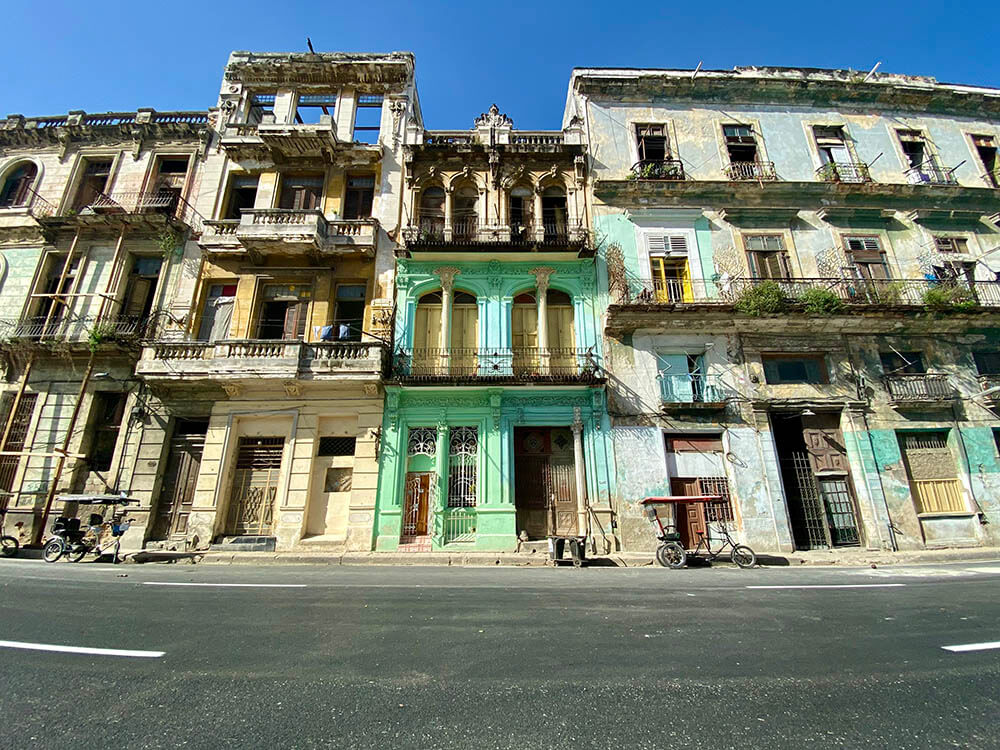
In the early 19th century, Havana was a playground for the rich and famous. It was a flourishing and fashionable city. It was renown for its theater and entertainment. Prosperity and a thriving middle-class fueled a wave of expensive classical buildings and private mansions. Havana became known as the Paris of the Caribbean. Unfortunately, with that prosperity came the sins of greed, corruption, and a lust for power at the expense of the people. Castro’s revolution promised to change all that. The long-term consequences of those promises have hit Havana hard.
The Realities of Socialism
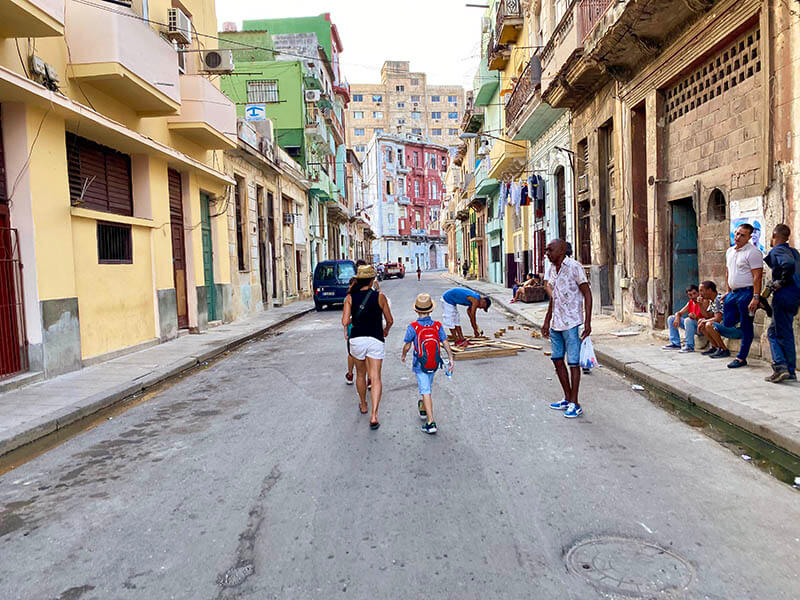
Walking through sections of Central Havana is a dystopian experience. In the shadows of vacant, crumbling classical buildings; the roads and sidewalks are in disrepair. Garbage litters the ground, and streams of filth flow through the gutters. People linger, aimlessly in the streets. Pleading with tourists for handouts and money. These conditions aren’t unusual in poor countries. But in Havana it’s different. Most poor countries in this condition are still developing. They have yet to reap the benefits of prosperity. That’s not Havana. Havana is an apparition of its former prosperity.
Old Havana insulates visitors from the realities of what life is like in much larger sections of the city. The government has invested heavily into the tourism market in recent years. Old Havana is much like what you imagine it to be. But, in reality it’s similar to a movie set. It’s creates an illusion of Havana for cruise ship visitors and timid tourist venturing off-property from all-inclusive resorts. It’s not a representation of the city as a whole.
In the majority of the city buildings and apartments are in ruins. Literally crumbling into the streets in some areas. [When walking: It’s as important to consider the condition of the buildings above your head as it is to consider the conditions of the ground below your feet. Havana can be hazardous.] Parts of Central Havana look like scenes from a post-apocalyptic movie. That’s not an exaggeration. It can be eerie.
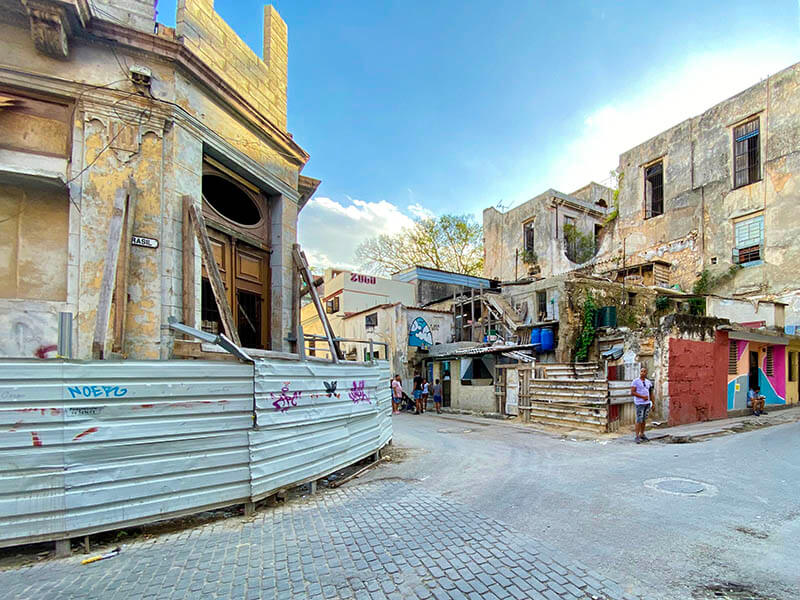

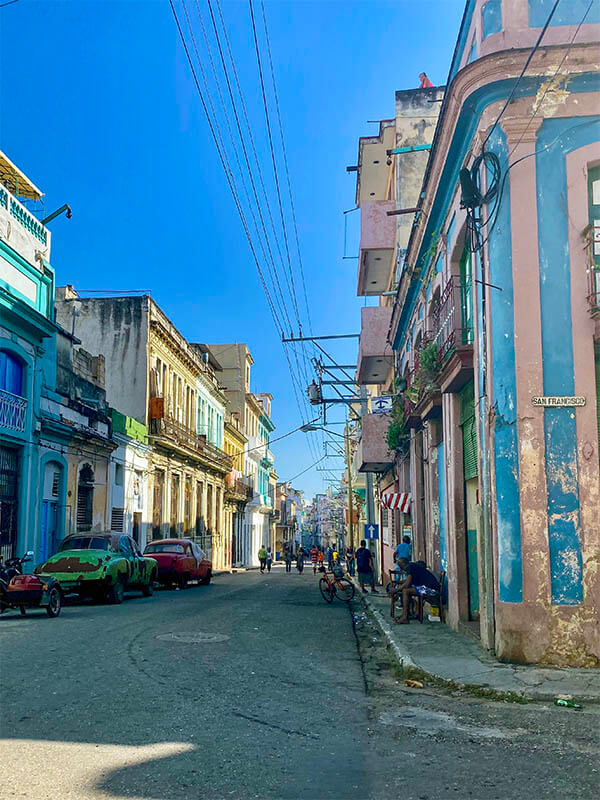
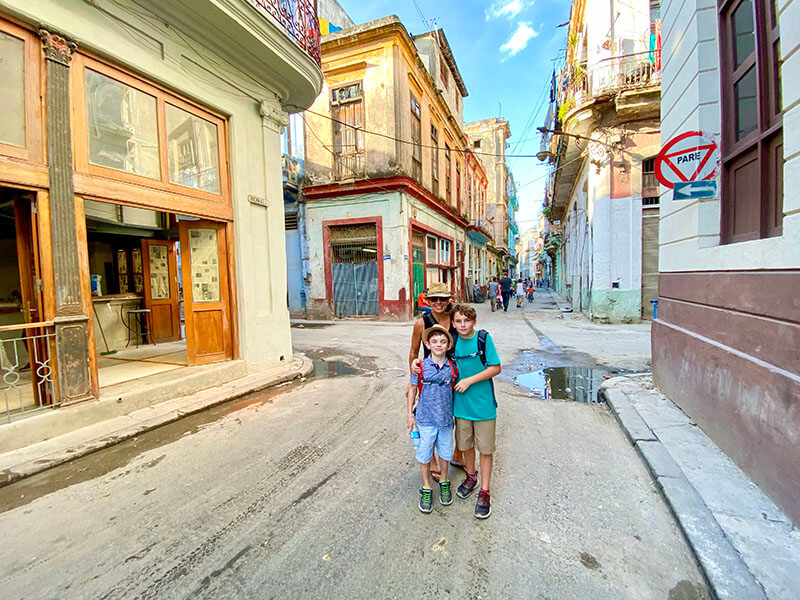
Sacrificial Remains
Things feel especially eerie when you stumble across the remains of dead animals in the streets. Yeah, you read that right. The remains of dead animals in the streets. That’s something no one mentions about Cuba in their travel blogs and guidebooks. Animal sacrifice is a thing in Cuba. The followers of Santería practice it regularly.
Santería decendes from a religious belief system that came to Cuba with the enslaved Yoruba people. The Yorubas carried with them various religious customs, including a trance and divination system for communicating with their ancestors and deities, and animal sacrifice. It’s not uncommon to see the remains of these practices in the streets of Central Havana. Pig head, dog leg, chicken feet, we saw them all. Usually on street corners. Because, apparently there’s a god of the corner (or so we were told.) Regardless, watch your step!


Where’s the Beef
Another rarely mentioned reality of visiting Cuba is the availability of food. More pointedly, the lack there of. Grocery stores in Havana are little more than organized collections of empty shelves. Like everything in a socialist system, the food supply is is under the control of the government. In Cuba this includes a system of rations distributed to citizens through districted bogedgas, and state-controlled grocery stores. The state-run stores are highly subject to limited supply and variety. We visited multiple stores, several times throughout our week in Havana. The shelves were nearly empty for every visit. The consistently available items included: cooking oil, instant coffee, pasta, powdered milk, [very random varieties of] canned vegetables, and rum. There’s always rum!

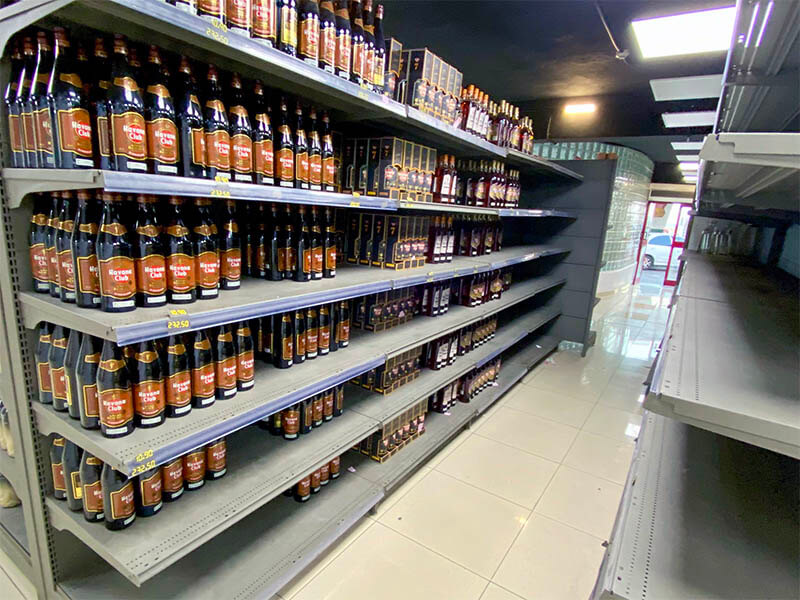
The only meat product we ever found in the state-run groceries was chicken hot dogs. We bought a pack (mostly because our son wanted bait to go fishing on the Malecón) and cooked them in our apartment. To put it plainly, they weren’t like any hot dog we’re familiar with. And for the record, the fish wouldn’t eat them either.
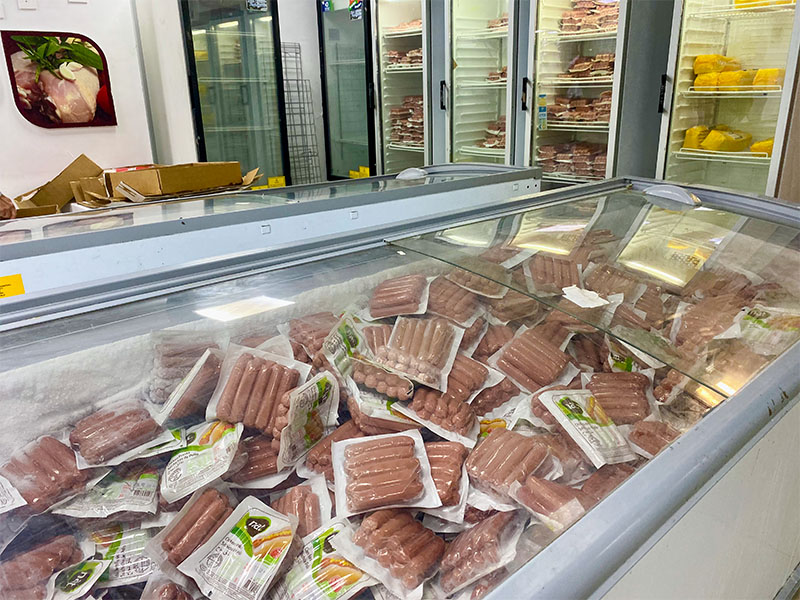
Here’s a fun fact! There’s no fresh beef in Cuba. Cows are a highly regulated commodity. Also controlled by the government. Because the island depends heavily on them for their milk supply its illegal to kill a cow. And the jail time for doing so is harsh. Cubans joke that it’s worse to kill a cow than another Cuban. It’s only funny because it’s true. It’s also something to consider when making menu choices at restaurants. There is often beef on the menu, but its never fresh.
Government Rations
In regards to rations, we spent an afternoon with a local a man that walked us through his neighborhood to show us what life is like to live as a Cuban. He was straightforward forward in opinions on how socialism has failed his country. He even invited us into the home of an elderly family member to explain Cuba’s rations system and how the government distributes them. To shed some light on quantities they include: 15 eggs; 1 lb. of chicken; 5 lbs. of rice; and 2 lbs. of beans… PER PERSON, PER MONTH! Let that sink in.
He also described the failure of government pensions which are supposed to support retired employees of the state. In this instance, which commonplace, we met Enidia an 84 year old woman whom worked for the government for 29 years. Her husband passed away two years ago, and she’s now receiving half of her late-husband’s pension in addition to her own. The Cuban government pays her a total of 15 Cuban Convertible Peso (aka CUCs pronounced “cooks”) per month. 1 CUC is equal to 1 USD. So to be clear, the government (for which she worked 29 years) expects her to support herself on $15 PER MONTH.
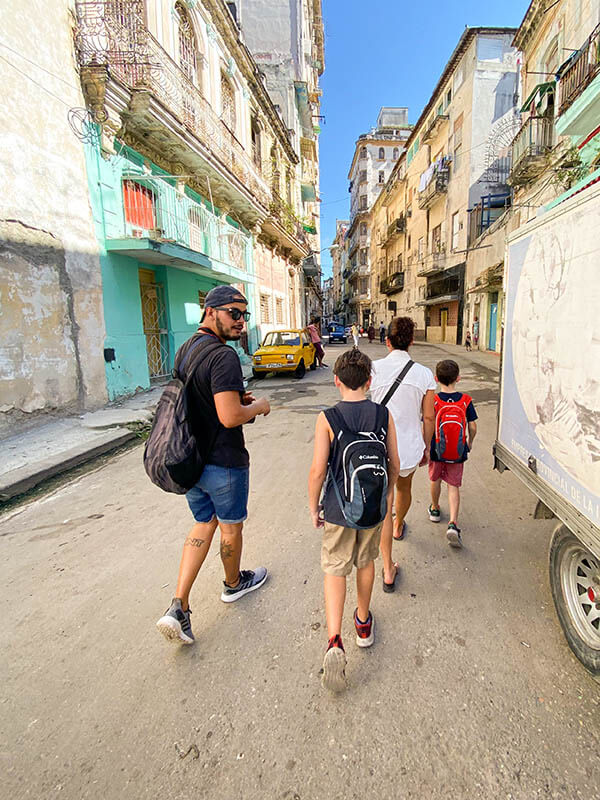

The shortage of food in Cuba extends beyond rations and government grocery stores. Restaurants are also subject to shortages. All but one of the restaurants where we ate had numerous items that weren’t available despite being on the permanent menu. We also experienced multiple meals with ingredients that were obviously past the best-by-dates. To put it simply, Cuba is not for foodies. That doesn’t mean there aren’t good restaurants. We did find one that was consistently good. But overall when it comes to eating out its 50/50. The meals that are good, are great. The meals that are bad, are terrible. There isn’t much in between. Truth be told, one of our meals in Cuba came with a bacterial infection. So beware. Souvenirs may not be the only thing you bring home from Cuba.
Strangely, despite the poor economic and living conditions in Cuba, images of revolutionist Che Guevara and Fidel Castro still adorn buildings and banners all across Havana. It seems counterintuitive to pay homage to either of them from an outsider’s perspective, yet their portraits still endure. We were told that neither are considered heroes. They are not held in high regard by the Cuban people. The only legacy their credited with is the consensus that the revolution was better for people than the Batista regime they overthrew. At least for the people of that generation. But the truth of the matter remains; bad may be better than worse; but it is still not good.
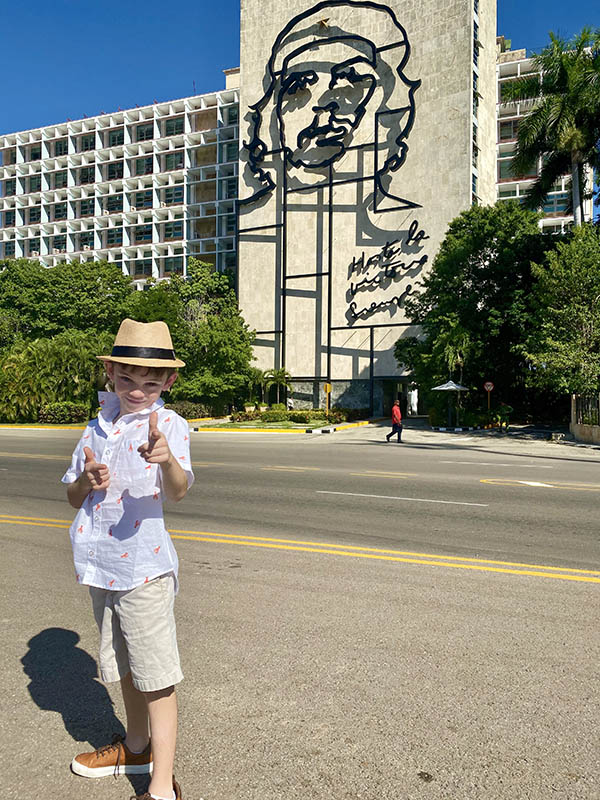
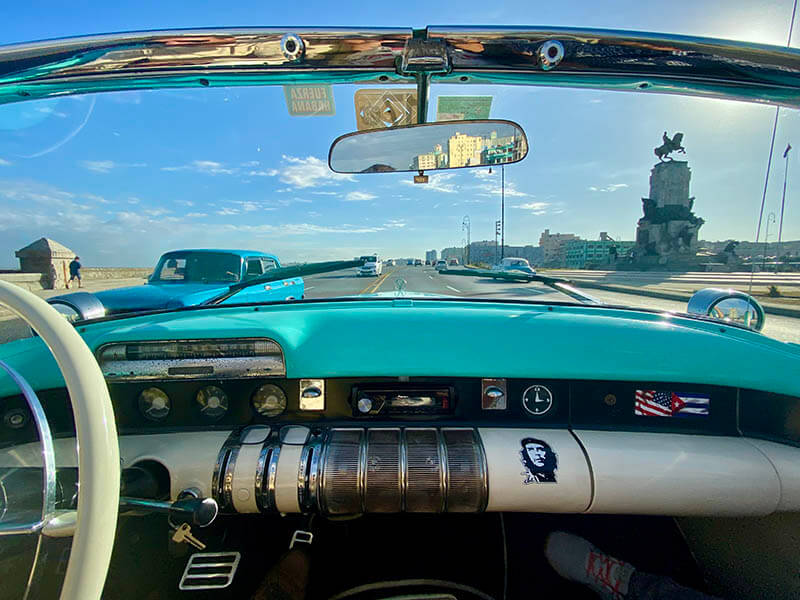

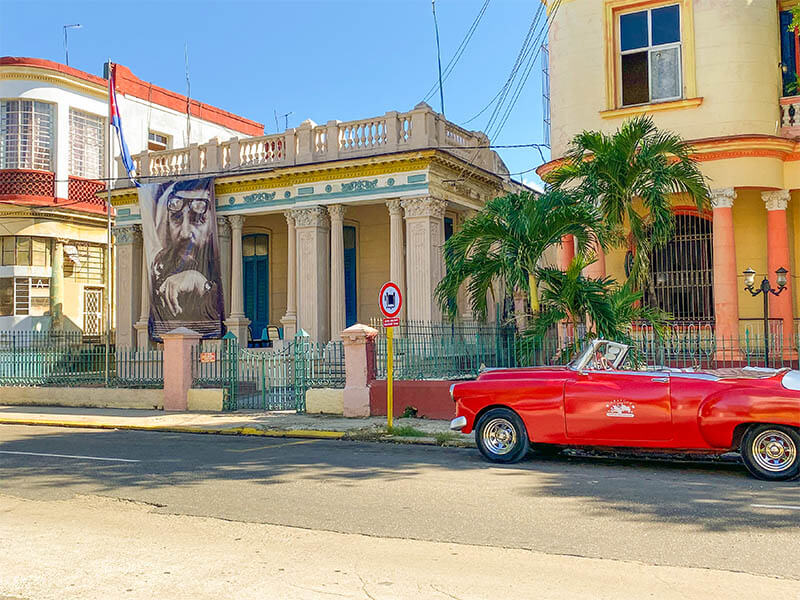
Two Plus Two Equals Five
Among the people of more current generations its obvious these socialist icons have lost their appeal. They recognize that over-reaching government control holds no power to make things better. In fact, there’s a new image popping up across Havana: “2+2=5”
“The phrase “two plus two equals five” (“2 + 2 = 5”) is a slogan from the 1949 dystopian novel Nineteen Eighty-Four by George Orwell. It’s used as an example of an obviously false dogma that one is required to believe, similar to other obviously false slogans promoted by the government in the novel. Orwell’s protagonist, Winston Smith, uses the phrase to wonder if the State might declare “two plus two equals five” as a fact; he ponders whether, if everybody believes it, that makes it true.” –Excerpt from Wikipedia
It seems the youth in Cuba are waking up. They reap no benefits of their grandparents revolution. It may be time for their own. This time it may be for freedom of thought, free speech and individualism. The right to own the production of their own labor.
There is some light being allowed into the system. President Miguel Díaz-Canel, appointed in 2018 by Raúl Castro, recently passed a new Cuban Constitution that provides a basis for private property and private business for the first time. Unfortunately, The new document also maintains a constitutional declaration that the Communist Party of Cuba plays the leading political role in Cuban society and that its “Marxism and Leninism ideology will guide its policies.” So, obviously, Cuba still has a long way to go on the road out of socialism. But, its hopeful. Small opportunities can create huge outcomes. It may be this generation, 70 years after Castro’s revolution, that chooses to take their country back.

Back to the Question
Now, back to the question. “Cuba’s on my bucket list! What’s it like?” Well, it’s not for the faint of heart. And, clearly it’s complicated. Cubans are the victims of their own circumstance, and the circumstances are rough. But, Cubans are also proud, friendly people that deserve the support of those in a position to help.
Would I go back? No. Cuba has a long way to go before its a place I would return to. But I wouldn’t discourage anyone from making the trip. There’s still an inherent and inevitable beauty about Havana despite being worse for the wear. The country is full of educated people willing to share their experiences. And a great deal of perspective and understanding comes with a visit to Cuba.
Also, it’s important to point out that the purpose of this writing is to paint an accurate picture of what Havana is like beyond the colorful photos of colonial buildings and classic cars. I didn’t spent any time describing the tours and trips we took while in Havana. So I want to be clear. We had a lot of fun in Cuba and we met some great people that we still call friends. Havana is a very safe place, even with kids. There is plenty to keep you busy. It just takes very purposeful planning and some realistic expectations. I hope I’ve provided both here.
You might also like these related posts:
Things to Know Before Traveling to Cuba from the United States
8 Awesome Things to do in Havana, Cuba with Kids
Viñales Valley Day Trip: Cigars, Horses & History
Boxing Lesson at Cuba’s Famous Rafael Trejo Gimnasio in Havana
AirBnB in Havana Cuba, Convenient to Everything

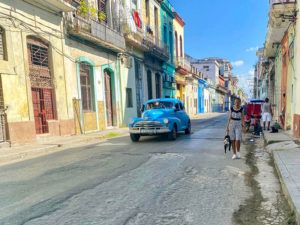

 Viñales Valley Day Trip: Cigars, Horses & History
Viñales Valley Day Trip: Cigars, Horses & History